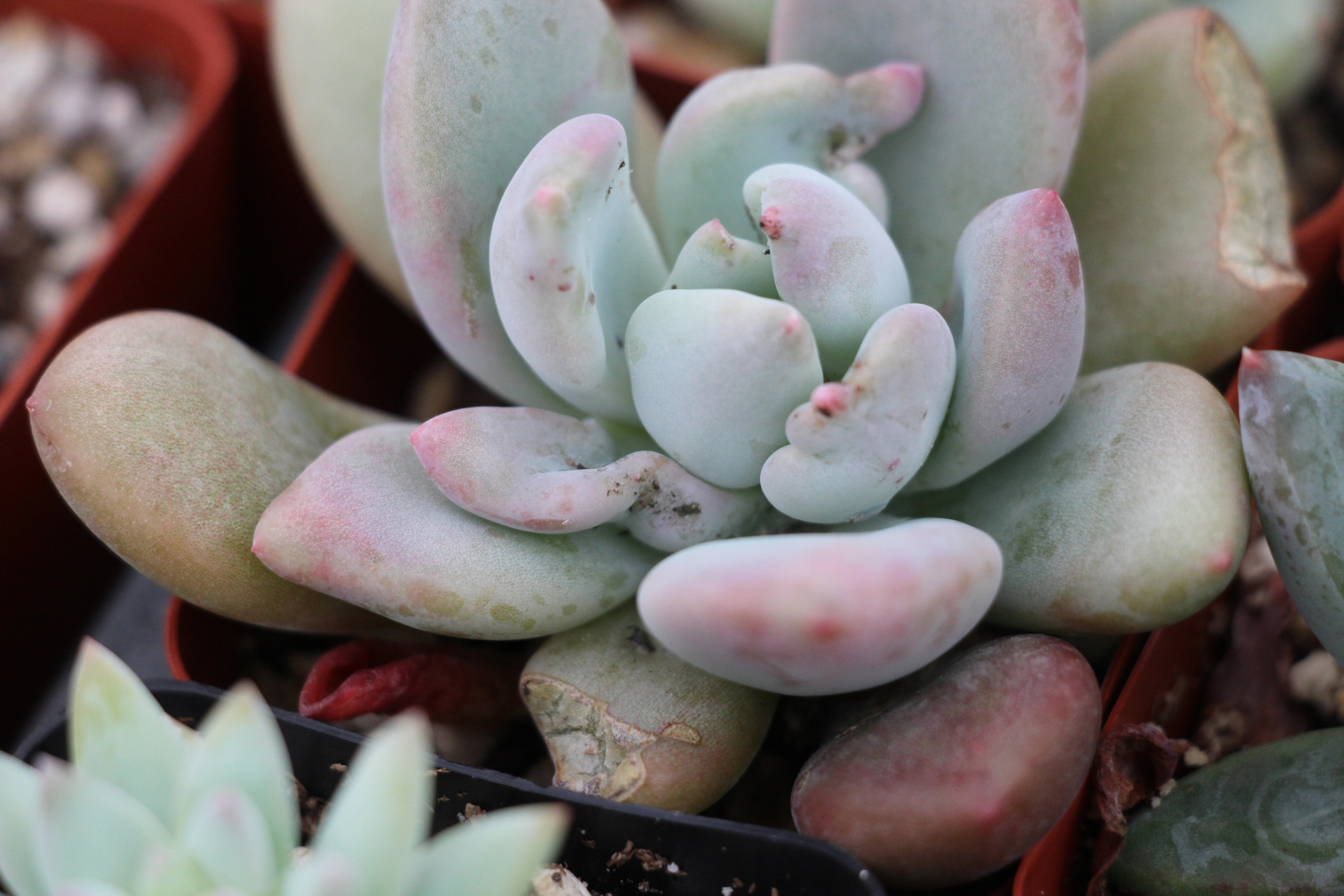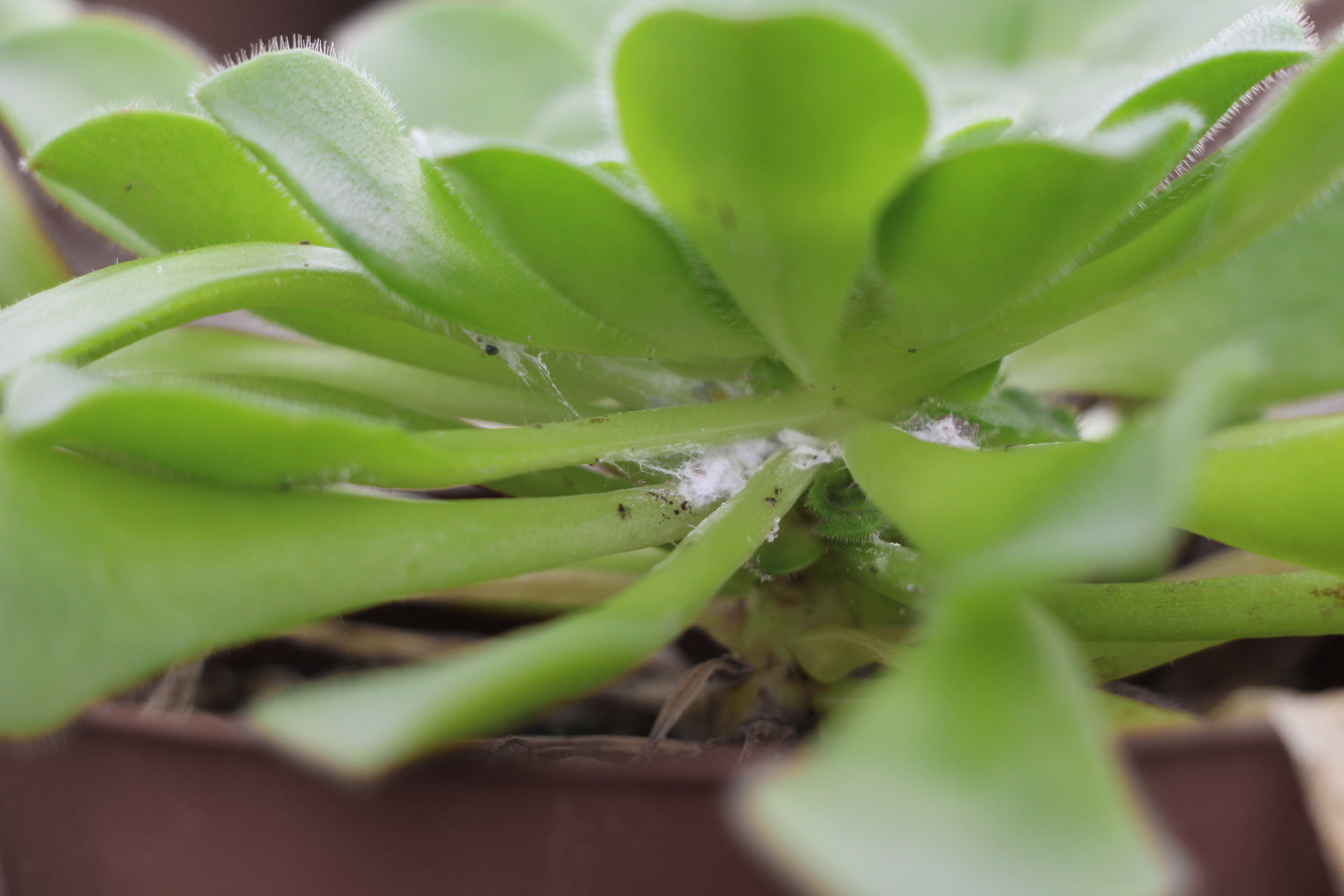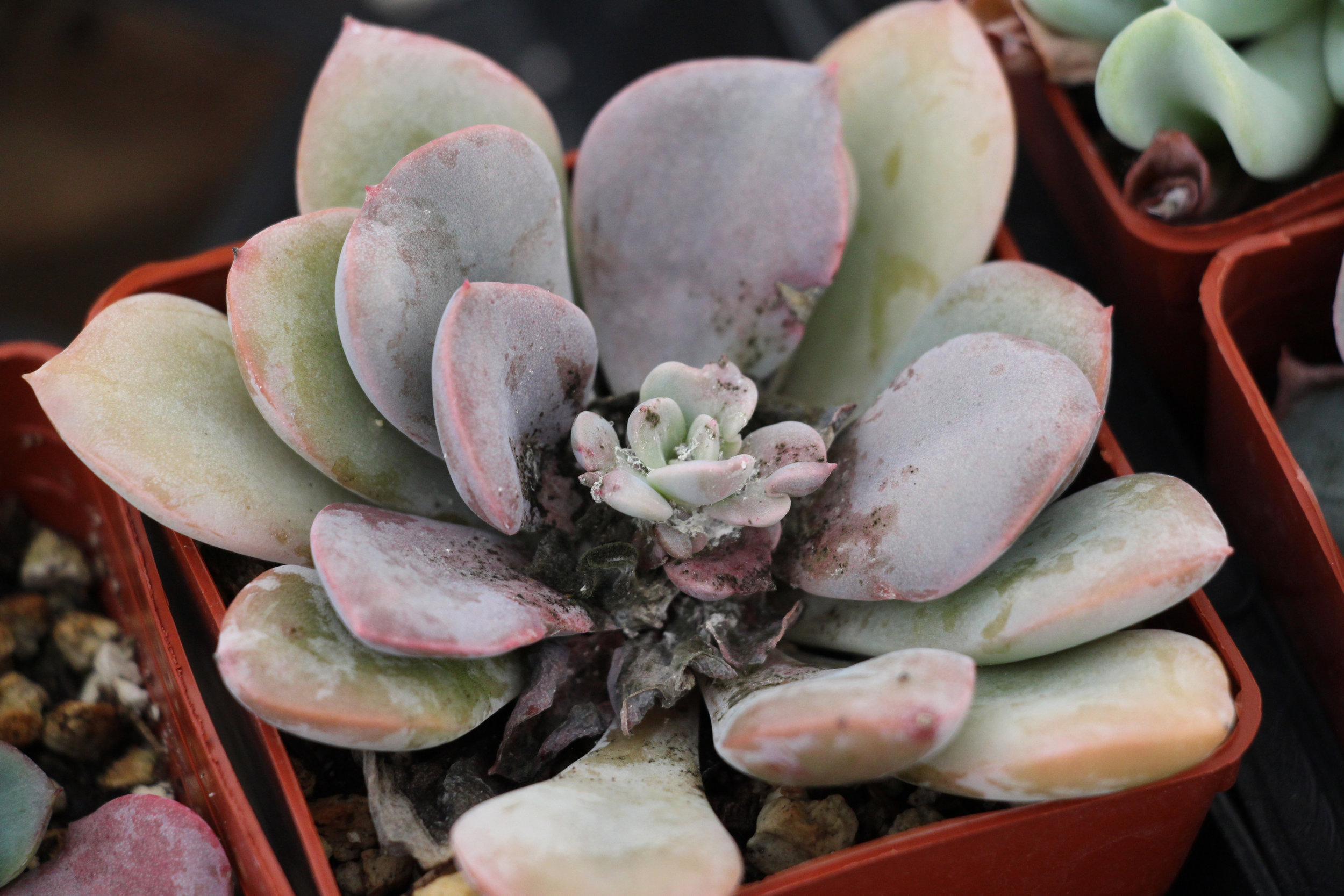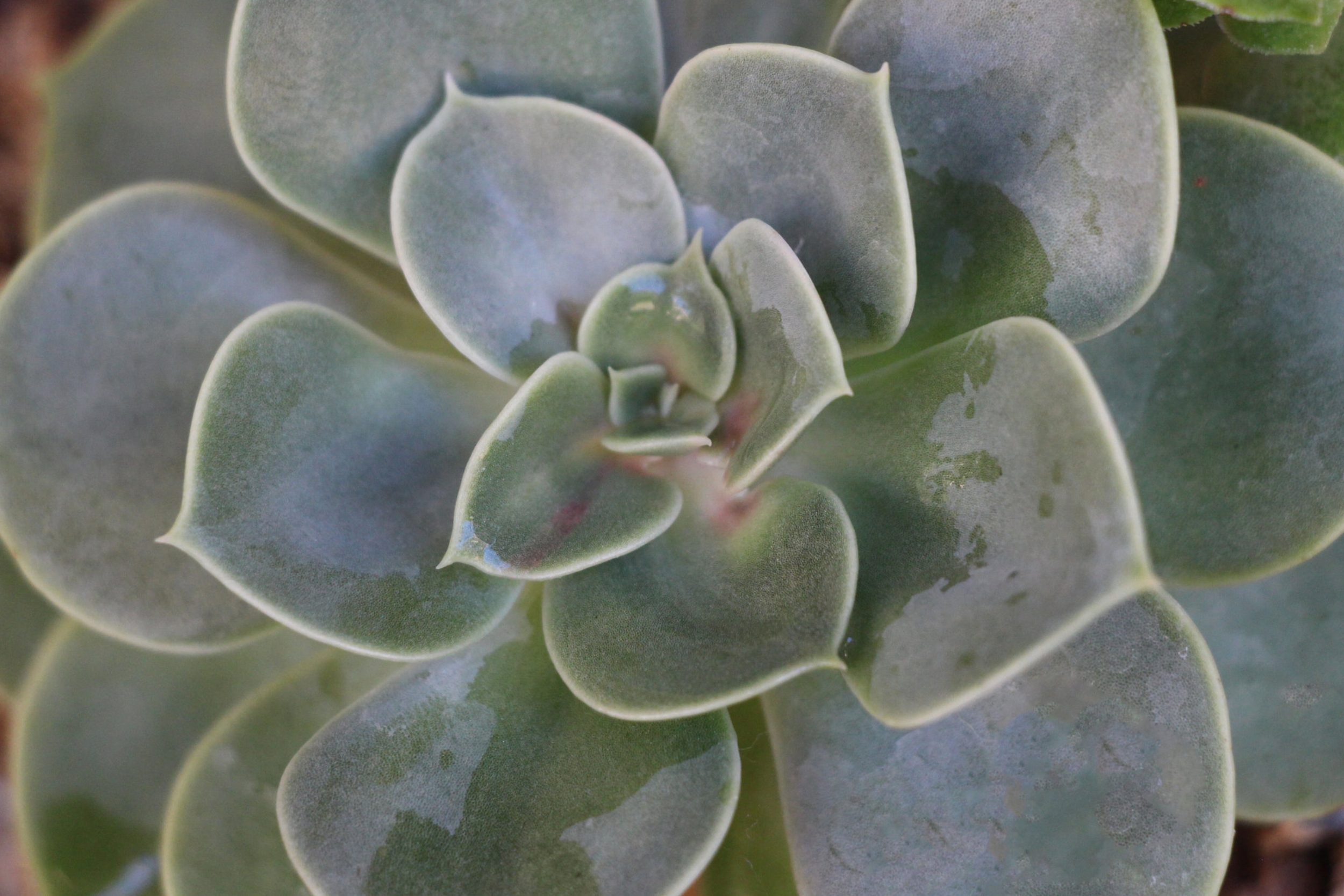How to Save your Succulents from Mealybugs
/Let's talk about every succulent lovers nemesis, the Mealybug. We hate them. We despise them. We loathe them. Get the picture? They are the absolute worst. They can come out of nowhere and destroy beautiful succulents in the blink of an eye! Mealybugs usually look like a white cottony substance that can be found close to the new growth on your succulent. They will be on the stem, at the base of leaves or right in the middle of your plant on rosette types. Mealybugs sneak up on you, so it's good to check your plants from time to time, even if there are no visible signs of them. Most of the time, before you even notice the actual bugs themselves, you will see your leaves beginning to grow misshapen and deformed. This happens when you have pests hanging out near your new growth.
Sometimes, it can be harder to spot Mealybugs if you don't carefully inspect the entire plant. On a plant like this Aeonium tabuliforme, the leaves grow so close together even mealys can't squeeze their way in between them. Instead of having a noticeably deformed plant, the bugs are hiding below, feasting on older leaves and new growth near the stem. This can be a dangerous breeding ground for Mealybugs, making it easier for them to go unnoticed as they spread to nearby plants.
The mealy situations mentioned above are bearable, and plants such as these will most likely recover quickly with a little assistance. Other times though, the plant can be so infested and damaged, that it's best to just KILL IT WITH FIRE! Not really, but definitely get it as far away from your other succulents as quickly as possible to avoid spreading the infestation.
So now that we know how to spot the little buggers, what can we do about them? There are all kinds of insecticidal soaps and sprays out there, but are they safe for succulents? We've tried some and weren't super happy with the results. We've tried mixing dish soap with cooking oil and water. Once again, the plants seemed to suffer a visual marring as the beautiful coating on the leaves is permanently removed. Before opening our shop, when we had a lot less plants to care for, we would comb through our succulents and simply stab the Mealybugs with a pin. This option is very effective if you have a few large visible Mealybugs, but does not deal with tiny bugs that are too small to see, eggs, or mealys that might be hidden in the soil.
Let's talk about Ladybugs for a minute. Not only are they super cute and harmless to succulents, they are general predators that feed on a variety of problematic insects, including Mealybugs! This is a natural and organic remedy for taking care of your succulent's Mealybug problem. We purchased Ladybugs from Amazon and had so much fun sprinkling them all over our succulents and watching them feast on any aphids, mites and mealys they could find! The great thing about having these little warriors fight your battle for you is that you don't have to spend time examining every inch of your plants in search of pests. The Ladybugs are happy to inspect your garden for you, saving you time and saving your plants from potentially getting damaged in the process.
Isopropyl Alcohol kills Mealybugs on succulents and evaporates quickly.
The most effective and immediate solution we have found so far is 70% Isopropyl Alcohol. This readily available and inexpensive remedy has been a lifesaver (literally) for our plants! We keep a squirt bottle full at arms reach at all times. You simply spray your entire plant, taking special care to saturate tricky areas where tiny bugs can be hiding. The alcohol completely evaporates in a few minutes and the Mealybugs should be dead. You can visibly see the cottony substance disintegrate and the grayish white bugs turn a deep red. After the alcohol evaporates we wash our plants with a strong stream of water to remove the dead bugs. You will want to check back in a few days to make sure you got them all. If not, just reapply the alcohol as needed.
We have used 70% Isopropyl Alcohol on almost every type of succulent with great results. We do want to note that we have seen slight burning on our Echeveria 'Blue Sky', Graptoveria 'Debie', and Graptoveria amethorum plants. All succulents are different, so if you are unsure, test the alcohol on an inconspicuous area before covering your entire plant. For the plants we mentioned above or any others that you notice a burn after being sprayed, we recommend using 50% Isopropyl Alcohol and reapply as needed.
A lot of times, Mealybugs can be hard to spot without a microscope! So make sure to check new growth for deformities to catch them before they get out of hand. We noticed some oddly shaped leaves on this Echeveria subsessilis variegata, and sure enough, upon further inspection we found some Mealybugs.
We hope this post has been helpful to you! Shoot us an email or leave a comment here if you have any questions and make sure to follow along with us on Instagram @needlesandleaves.
Happy Planting,
Tawni + Krista
(This blog post contains some Amazon affiliate links. If you make a purchase through one of those links we get a small commission. We only link to products we have used, loved and think you would benefit from.)




















